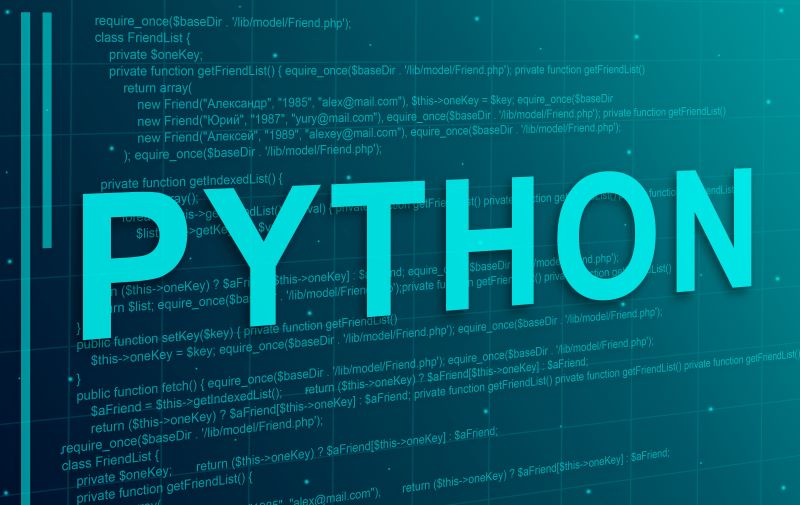Rust vs. Python: How They Compare, and Which One Is Best for Web Scraping
Whether you’re designing a new product or preparing to scrape the web, one of the first steps of any project is to pick which programming language best suits your application. So in the competition of Rust vs. Python, which one comes out on top?
Python is consistently at the top of every developer’s list, and it’s notorious for its intuitive language, active community, and toolkits that lend it particularly well to data analytics, data science, and web scraping — but it’s not the only language around. Despite being one of the newer languages, Rust has caught on fast. Its complex syntax may create a steeper learning curve for developers, but its high performance, high security, and memory management mechanism have made the investment more than worthwhile. So how do you choose?
In this article, we’ll take a deep dive into both programming languages to give you a comparison between Rust vs. Python. First, we’ll show you the main features of each, then list applications that work best for both. We’ll also give the main upsides and drawbacks, and then see how they stack up — and which one works best for web scraping.
Python at a Glance

First up in our Python vs. Rust matchup is Python. First released in 1991 by developer Guido Van Rossum, Python is renowned as a go-to programming language worldwide. The IEEE Spectrum’s 10th Annual Top Programming Languages ranked Python as the #1 programming language for the second straight year in a row, beating other common languages such as C++, Javascript, and Java. Not only did it maintain its lead, it widened it.
Called a “jack of all trades, and master of some”, Python is not only able to perform nearly every task with an acceptable degree of proficiency, but it also specializes in advanced applications such as data science, machine learning (ML), and artificial intelligence (AI). Its simplicity makes it ideal for even newcomers to coding, but its use in mathematical computations lends itself to the advanced work that researchers do as well. From high schoolers to PhD professors to developers, everyone can take advantage of Python.
Advantages of Python
Known for its simplicity, community, and utility, Python is high-level, object-oriented, and dynamically typed. It employs garbage collection as its memory management system. Its code is notoriously readable, with a heavy emphasis on indentation and the use of as few lines of code as possible to get the job done. Here’s a closer look at its features.
User-friendly syntax
One of the main advantages of Python is its code readability. Python’s syntax is designed to resemble written language, making it easier to recognize, read, and debug. By eliminating quotes and curly brackets and maximizing the use of indentation to create the sense of “white space”, Python users have an easier time deciphering their code and can write their script in much the same way as if they were writing out a language.
Dynamically typed
Python is also dynamically typed, which means that all variables are assigned at runtime. While this can lead to more errors at runtime and can impact performance, it allows users to change variable types midstream, giving them more flexibility as they code. And because users aren’t required to specify their variable types as they go, fewer lines of script are needed to write the same code.
Versatility
The folks at IEEE Spectrum are right; Python is a “jack of all trades” in the programming world. It may be suited to some applications better than others, but developers can use Python for projects ranging from web development and analytics to app design and web scraping. It’s especially useful for projects involving AI or ML.
Part of the reason Python is so versatile is the wide number of toolkits it possesses. Some of its most popular ones along with their applications are:
- NumPy — Mathematical calculations and research projects
- Pandas — Data analytics and data science
- TorchPy — AI and ML
Many other libraries and toolkits exist to help coders tackle whatever challenge meets them as they code, making Python’s versatility a key asset in shortening the development cycle.
Vast resources
One of the reasons that Python is so versatile is that it has so many resources attached to it. The fact that it’s been around since 1991 gives it much more maturity than newer languages, so there are many libraries and frameworks already in place that developers can use for their projects. No need to reinvent the wheel.
Python’s maturity also means that it has a large, highly active community. Python developers are constantly providing insights and answers regarding projects that they’ve encountered, so users have a wide base to reference for their own builds. It’s also open-source, so the resources are free to access and the software is regularly improved by those who use it — and the documentation is excellent too.
Compatibility
Another component of its versatility, Python plays well with a wide number of platforms, operating systems, and apps. Unlike C#, Python wasn’t designed with any one system in mind, so it’s compatible with Windows, MacOS, and Linux, giving it greater compatibility than other, more limited languages. It works with PHP and .NET as well.
Applications
Python’s versatility lets developers use it for a wide range of applications, including:
- Data science and analytics. Toolkits such as NumPy and PyTorch allow users to clean, wrangle, and operate on large, complex data sets. That along with its data visualization capabilities makes Python the tool of choice for almost every project involving data science or data analysis.
- AI and ML. PyTorch enables users to create algorithms that can be used for computer vision (CV), natural language processing (NLP), and neural networks — the kind that are prominent in the AI and ML applications we see today.
- Web and app development. You’d probably think of CSS, HTML, or Javascript for web and app development before you’d think of Python, but it can get the job done for those projects too.
In addition to these libraries, several other tools exist to help users do their web scraping with Python. Two of the most important ones are Scrapy and Beautiful Soup, with the latter working alongside parsers to extract data from even the messiest HTML pages, and the former being used to actually scrape and crawl the web. Taken together, they make Python an excellent language for web scraping.
Who Uses Python?

The advantages that Python offers make it the language of choice for everyone from newcomers to enterprises, and everyone in between. Some of the biggest names that use Python are:
- Netflix uses Python for data analysis, and also within their Central Alert Gateway to send users security alerts and monkey apps to monitor changes.
- Spotify uses Python for creating processes, scripting, and prototyping, as well as for data analysis.
- Google replaced its initial Java-based web crawling spider with Python’s tools to scrape the web.
Other giants such as IBM, NASA, and Bank of America round out the list. Electronics, finance, IT, or aerospace — every industry can take advantage of Python.
Python’s Pros and Cons
As a perennial frontrunner in programming languages, Python has plenty to offer, but it’s not without its drawbacks. Its simplicity means it often boasts a relatively short development cycle, but it sometimes lacks in speed and memory storage. That makes it problematic for some high-performance applications, so it’s not always the best language to use.
Pros
Ease of use
Python’s intuitive language makes it an easy option for developers of all skill levels. From developing a webpage to programming for a basic robotics project, even teenagers first learning to code often start out with Python. If you want a programming language that most developers are either already familiar with or can pick up fast, Python is for you.
Development speed
Part of Python’s simplicity lies in the fact that it requires comparatively few lines to write. That carries more benefits than just improved user-friendliness; it shortens the development lifecycle, too.
Some programs require thousands of lines of script to write if not more, so reducing the amount of text required can speed up development significantly. Python’s dynamic typing and language-imitating syntax make for less code, allowing developers to bring your product to life faster.
Extensibility
Another reason that the development cycle is often shorter with Python is that it has so many tools to make the coding process go faster. The abundance of libraries, reference materials, tutorials, and documentation created by Python’s highly active community allows developers to write less code, as they often have a helpful tool at their disposal. Python lets you work smarter, not harder.
Cons
Lower performance
Python’s code performance is one of its biggest drawbacks. This is due in part to the number of features it lacks compared to more advanced languages, and also partly due to its slow runtime and inefficient memory storage mechanisms. While plenty of tools and extensions exist to help its performance, Python may not be adequate for high-performance applications.
Slower runtime
Python’s dynamic typing allows for greater flexibility as developers write their code, but it’s a slower typing style than static typing. Comparing Rust vs. Python, Python’s runtime is up to two times slower than Rust’s. Applications with high-speed requirements may need a different language.
Less memory
Python uses garbage collection as its memory management system. It’s a relatively simple way of reclaiming previously allocated memory that’s no longer being used, but it’s not very efficient and takes more time than other methods. It also doesn’t resolve the problem of memory leaks, so if your application requires a lot of memory, Python may not be the right choice.
Error detection
Another implication of Python’s dynamic typing style is that errors aren’t caught until runtime. This makes Python products slightly harder to debug, and it won’t display recommendations for how to resolve the errors that exist.
Despite these drawbacks, Python still has a plethora of libraries and tools such as their integrated development environments (IDEs) to overcome its error-handling deficit. So, while debugging and error detection may be slightly more difficult, this Python drawback has a workaround.
Rust at a Glance

While Python is known for its simplicity and support, Rust has gained popularity for its usefulness as a high-performance language — and it’s rapidly gaining momentum.
First developed in 2006 by Graydon Hoare and released to the public in 2010, Rust is multiparadigm, general purpose, and open source. Its youth means it’s not as mature as Python, but what it lacks in resources, it makes up for with a highly enthusiastic community.
It may have a more difficult syntax to master than most programming languages, but Rust’s high performance, code security, and efficient memory management have made it a favorite amongst developers. In fact, Rust is so popular that it’s topped the list of most beloved languages in Stack Overflow’s Developer Survey 2022 seven years in a row.
Advantages of Rust
Rust places a heavy emphasis on performance, memory safety, and concurrency, so it excels in many areas where Python falls short. It’s one of the more technical languages to write, which gives it a relatively steep learning curve, but its many features, high performance, code security, and efficient memory management make it a favorite nevertheless. Here are Rust’s primary features.
High performance
Rust was designed with performance in mind. As a statically typed language, Rust requires that all variable types be defined before compile time, as the script is translated into machine code. The result is that no interpreter is needed between the hardware and the code, so Rust can execute its programs faster and with greater reliability.
Thread safety
Many software programs perform multiple tasks simultaneously, and some may take longer to complete than others. Some of these tasks are interdependent, so when they finish in an improper order, errors may result.
Rust seeks to improve code performance by implementing thread safety, so that race conditions like these can be avoided. It does this by requiring that only one variable be accessed at a time, eliminating any overlap that could occur. This data ownership model results in more secure, higher-quality code.
Zero-cost abstraction
As a project or software item expands, it is sometimes necessary to add more features to the original product. Abstraction makes this process easier by adding on only the most necessary information and stripping away unnecessary data. It can also simplify maintenance, but it can weigh down performance at runtime.
To keep its performance at a max, Rust implements zero-cost abstraction. That means it ensures that any abstractions won’t cost your program additional code overhead, or at least that code with abstractions will perform similarly to code without them. This is part of how Rust maintains its quality performance and enables more features in its products at the same time.
Memory management
Instead of garbage collection, Rust uses “stacks” and “heaps” for its memory storage system. The two have different functions within memory management, but their use frees up more memory than that of many programming languages. As a result, Rust handles its memory more efficiently when comparing Rust vs. Python.
Code security
Security was a top priority when Hoare designed Rust, so it possesses many features that build safety directly into the language.
First, Rust prevents memory leaks and starts out safe by default, so developers are required to specify otherwise. Rust also comes in two modes: “Safe Rust”, which imposes certain restrictions on developers as they code to implement optimum security procedures, and “Unsafe Rust”, which takes those restrictions off. Developers have to work to make Rust unsafe.
Applications
With these advanced features, Rust is a preferred programming choice for many different applications. Some of them are:
- Microcontrollers. As a statically typed language, Rust checks its variables before compile time, enabling it to operate closer to the hardware involved. That makes it ideal for microcontrollers and embedded systems.
- Operating systems. Hoare initially developed Rust to resolve an operating system issue, so it makes sense that this language is often used for OS-related projects.
- Internet of Things (IoT) devices. Rust’s ability to manage concurrency along with its superior code safety makes it ideal for IoT devices that require high-speed, error-free performance.
As with Python, Rust is a great language for web scraping. Its memory safety helps keep your system secure while scraping the web, and its ability to perform tasks concurrently speeds up the scraping process. Its high performance, reliability, and expressiveness also make it a frontrunner as a web scraping language, so it should be on your shortlist when you decide which one to use.
Who Uses Rust?

With so much to offer, many industry leaders are turning to Rust as their programming language of choice. A few names you might recognize are:
- Amazon uses Rust for its cloud storage services, and is also a main contributor.
- Microsoft uses Rust to help manage part of its operating system, and will launch a new version to let developers use their API for software development.
- Dropbox uses Rust for file synchronization.
Rust may have fewer users due to its relative youth, but with so many tech giants using it today, its popularity in the Rust Vs. Python competition is catching up fast.
Rust Pros and Cons
High performance, faster speed, and improved security are some of the main advantages of Rust, but its complexity and relatively slow runtime are hurdles that developers must clear. Here’s a closer look.
Pros
High performance
Its performance is the primary reason that users look to Rust. With so many features and more efficient management, products powered by Rust can execute more commands in a given unit of time. Simply put, Rust just lets developers get more done.
Security
Its automatic “Safe Rust” configuration helps ensure greater code security, and it implements code safety protocols unless developers deliberately choose to violate them. That makes Rust an ideal choice for products requiring especially safe code, such as those that might be more susceptible to an attack.
Error handling
Unlike Python, Rust doesn’t just flag error messages; it also gives recommendations on how they can best be resolved. That makes debugging easier, though the statically typed language may point out more errors upfront than dynamically typed languages such as Python.
Memory management
The “stack and heap” method that Rust uses to manage its memory is substantially more efficient than the garbage collection that Python employs. It also cuts back on memory leaks automatically, freeing up memory and simplifying the process for the developer.
Cons
Complexity
The chief drawback of Rust is that its language is more technical, and somewhat more difficult to learn. It may be easier to learn Rust for Python programmers since they already have that one under their belt, but it wouldn’t be a good choice for a first programming language.
One way to overcome this hurdle is to convert Python code to Rust. Calling Rust from Python is easier than calling Python from Rust, since Python code is simpler. In doing so, developers can learn the differences between the two languages, and can sharpen their skills with each — but they need a firm footing with Python first.
Slow runtime
Rust is doing more behind the scenes than other programming languages, so it takes longer to execute. It has a relatively slow runtime compared to other languages, but in the Python vs. Rust benchmark matchup, it still runs faster than Python.
Less support
Because it hasn’t been around for very long, there are fewer supporting resources for Rust vs. Python. The community is highly active and more resources are sure to come, but existing libraries and supports are more limited.
Python vs. Rust Performance

With all that in mind, the question remains: How do Python and Rust compare? Here’s a general overview of Rust vs. Python performance:
- Performance — Rust
- Speed — Rust
- Memory — Rust
- Features — Rust
- Simplicity — Python
- Versatility — Python
- Resources — Python
- Compatibility — Python
Ultimately, the best way to decide which programming language is best is to consider which one most suits the needs of your application. If you need a quick, simple, versatile solution, go with Python. If your product demands higher performance and security, and you can handle the extra complexity, choose Rust.
Rust vs. Python: Which One Is Best for Web Scraping?
Both Python and Rust are excellent choices for web scraping, but for different reasons. Python is used for many other types of projects, and its widespread popularity makes it the most commonly used programming language for web scraping by far — especially given its compatibility with data analytics, data science, and AI/ML, which often use web scraping. Rust’s concurrency capabilities enable it to run faster, however, and its security protocols can help safeguard your system as you scrape.
Final Thoughts

There are many factors to consider when you choose between Rust vs. Python. Python is known for its simplicity, versatility, and ample resources, so it’s a great language to turn to as a default. It does have some limitations such as inefficient memory management systems, lower speed, and lower performance. Rust’s syntax is more technical and it has a slow runtime as well, but its higher performance and superior memory management may make it a better programming language for applications where Python would fall short.
Whichever programming language you choose, if your project involves scraping the web, you’ll need a proxy provider to help you access your sites. At Rayobyte, we offer high-quality, ethically sourced proxies that are ideal for web scraping. Whether it’s residential or data center, static or rotating, our customers can choose from a wide variety of proxy solutions, all of which are compatible with whatever language you choose. Once you’ve settled on a programming language for your project, contact us to see how our proxies can help get you crawling.
The information contained within this article, including information posted by official staff, guest-submitted material, message board postings, or other third-party material is presented solely for the purposes of education and furtherance of the knowledge of the reader. All trademarks used in this publication are hereby acknowledged as the property of their respective owners.






